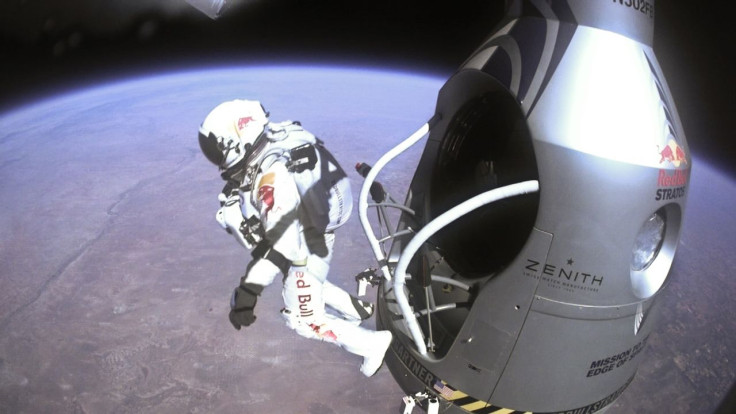How Felix Baumgartner’s Jump Helps Space Tourism

When Felix Baumgartner leapt his way past the sound barrier Sunday, one thing was clear: The Space Age isn’t over; it’s just beginning and people are excited.
More than 8 million people tuned in to the YouTube livestream as the Austrian daredevil lunged from a balloon capsule into the void, making it the single most-watched event on the website’s history. Millions more watched on television. Half of Twitter’s trending topics worldwide discussed the jump as Baumgartner tumbled back to earth. The first photo of his landing posted on Facebook was shared 29,000 times and liked 216,000 times in 40 minutes. By all accounts, these figures are out of this world.
The 24-mile-high skydiving spectacle also broke three aviation records -- height reached in a balloon, highest skydive and fastest freefall (833 mph) -- and reminded people, particularly Americans, that the end of NASA’s space shuttle program was not the end of people traipsing around above. In reality, it’s the beginning of a new age of space tourism led by competing companies in the private sector.
Baumgartner’s stunt, like those of the 1960’s Space Race, reignited an interest in the great playground beyond. And for those deep-pocketed adventurers who’ve climbed Mount Everest or set foot on Antarctica, it’s clear there’s only one place left to go: Up, up and away.
Numerous publications reported the so-called end of the Space Age last year after the shuttle Atlantis returned to earth for the last time. Now, players in the space tourism industry like Virgin boss Richard Branson, Jeff Bezos (of Amazon.com fame) and Elon Musk (of Tesla Motors and PayPal) are reminding us that humans will enter space in record numbers when Virgin Galactic, Blue Origin and Space X launch in the coming years.
High-ranking executives of several of these companies praised Baumgartner for his leap on Sunday. After all, it may have been a massive publicity stunt for Red Bull, but it might as well have been an advertisement for space tourism.
Virgin Galactic President George Whitesides tweeted: “Felix is a truly brave explorer, and his jump will benefit space exploration.” Whitesides added, however, that his company’s SpaceShipTwo passenger spaceships will fly much higher to the official edge of space (62 miles/100km up).
“We’ll go higher, but we’re coming down inside a spaceship,” he acknowledged.
Some 30 companies report that they are currently developing both crew and cargo launch vehicles, including many designed to usher high-paying tourists into the cosmos on commercial flights.
Virgin Galactic is currently leading the way on the space tourism front, with 22 successful gliding test flights of its seven-passenger SpaceShipTwo under its belt. The company has announced that a total of 529 "future astronauts" have signed up for the $200,000 two-hour suborbital flights -- eclipsing the total number of humans to reach space thus far in the 50-year history of manned launches. The company aims to sell 600 tickets before the first commercial flight in the second half of 2013.
The short flights offer passengers a few minutes of weightlessness and a view of the curvature of earth without the hassles of going into orbit. Each space tourist -- Branson and his family included -- will undergo a week of training at Virgin Galactic’s New Mexico spaceport before taking flight.
At the Farnborough Airshow in Hampshire, England, in July, Branson boasted that Virgin Galactic's tourism arm has, as yet, "no competitors on the horizon" and the potential to entice thousands of high-net worth customers.
"The initial flights will be suborbital, which will give people a taste of space," he said. "From there we'll go into orbital flights and maybe one-day hotels in space."
That’s Branson’s vision for the future. And if a man can leap back to earth from the edge of space and survive, who’s to say we won’t be zipping up to space for a snooze in a decade or two?
© Copyright IBTimes 2024. All rights reserved.












